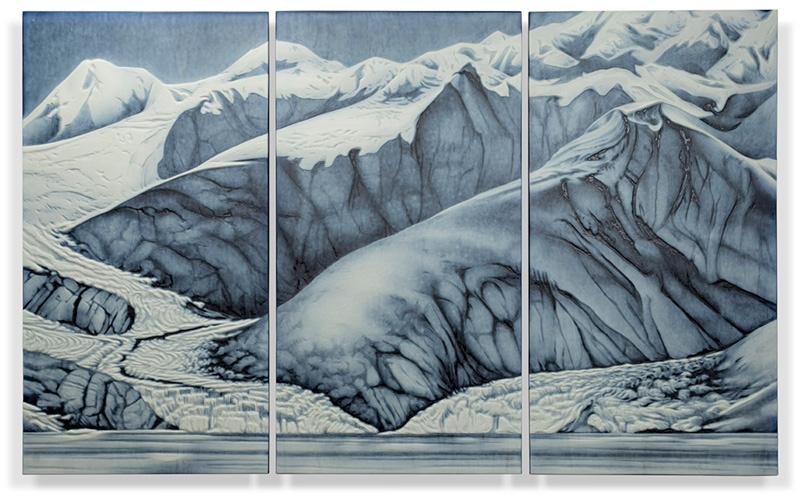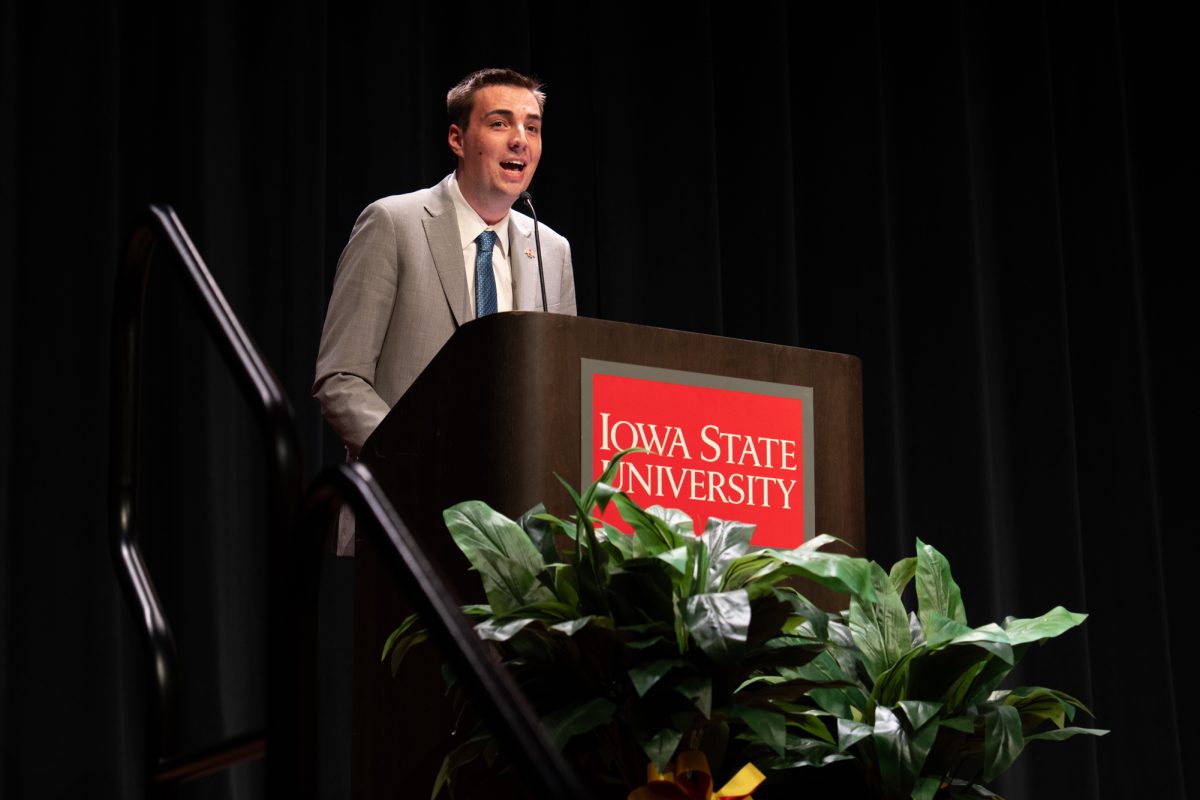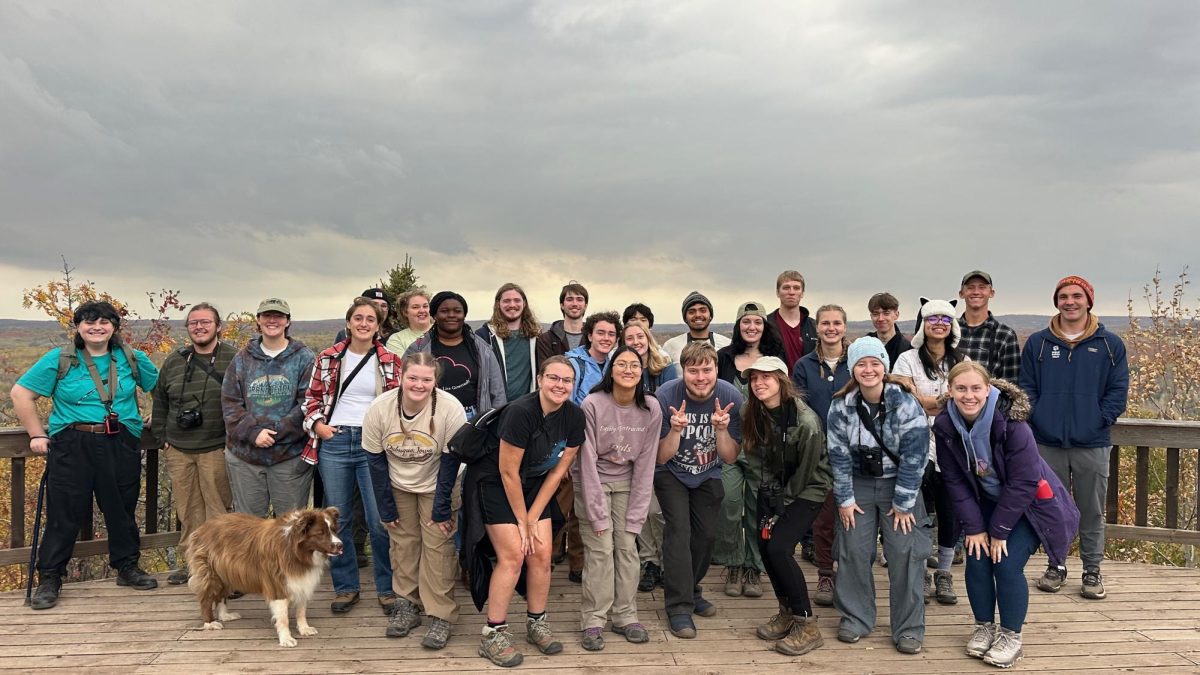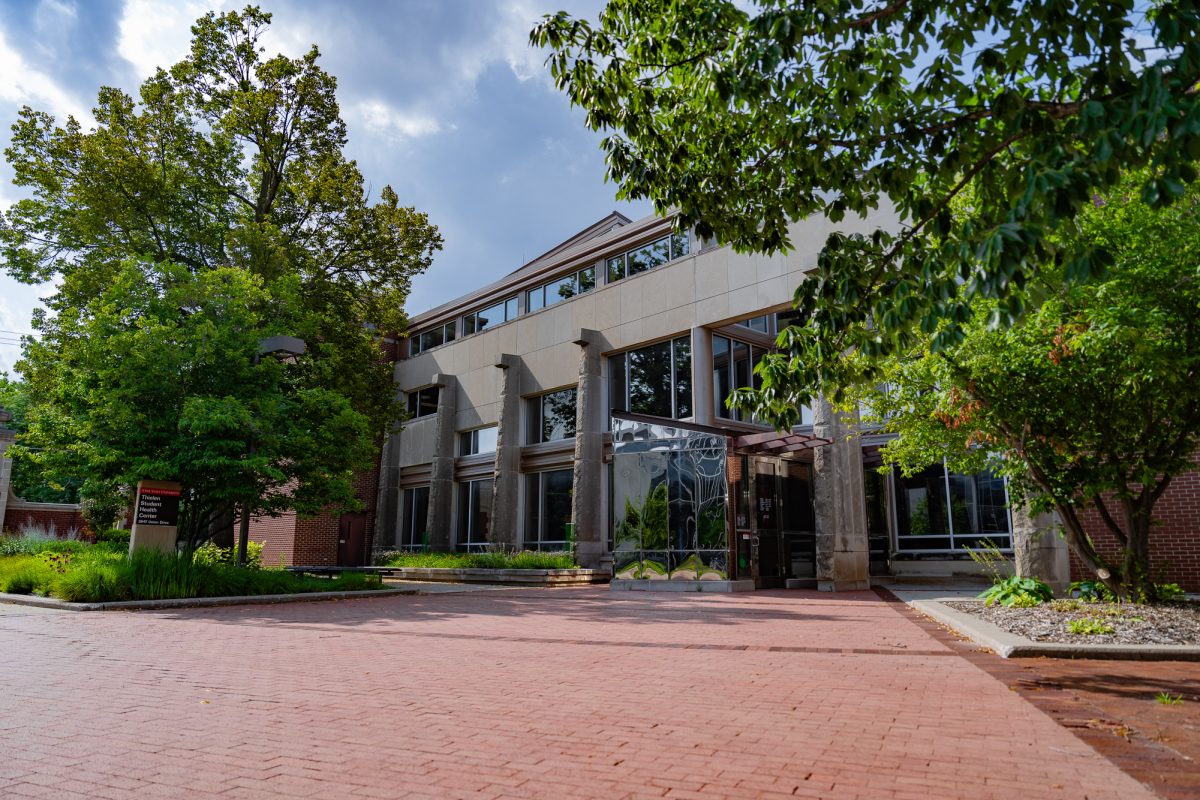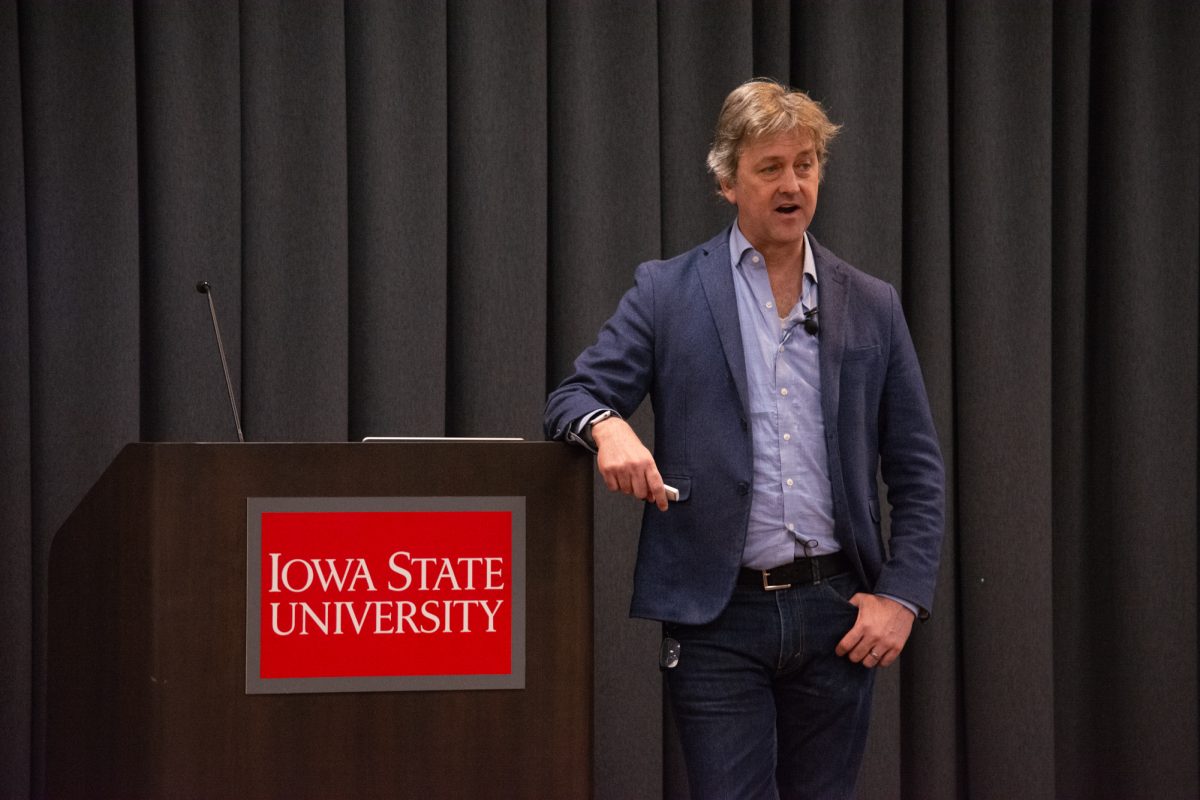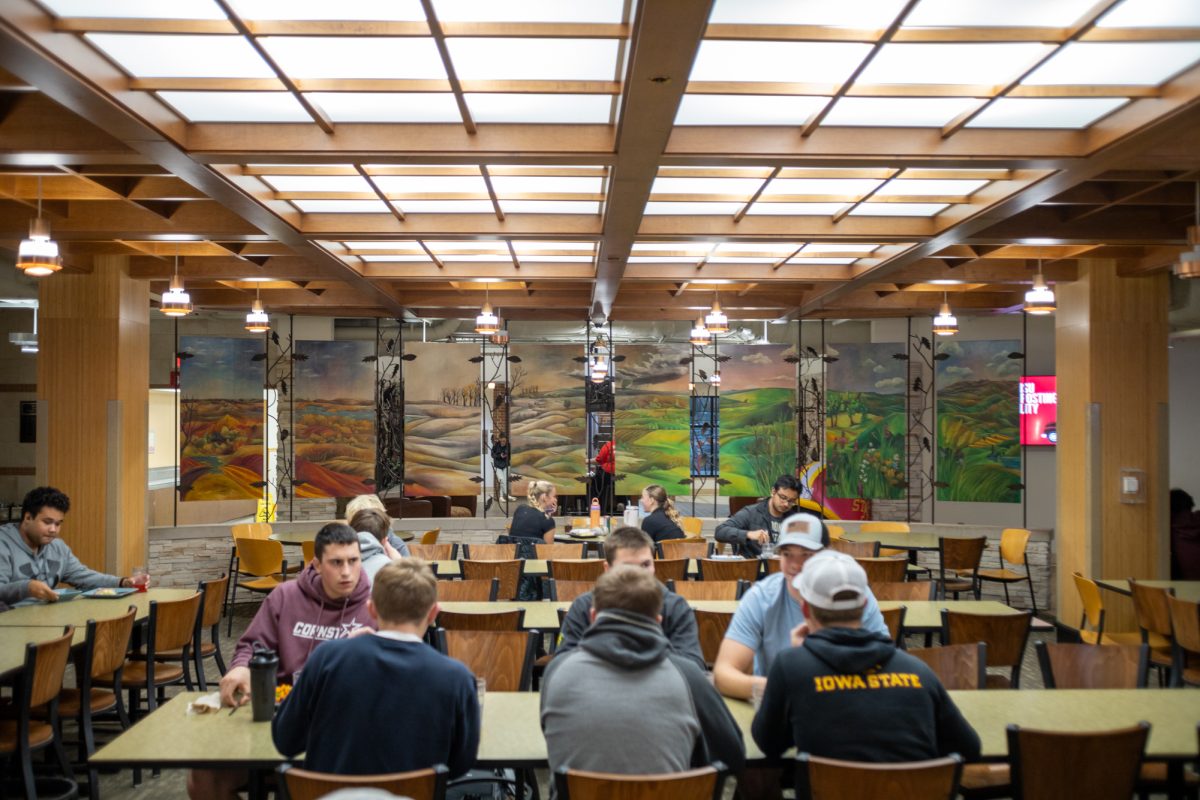An art piece was unveiled at Brunnier Art Museum on Oct. 12 by April Surgent, an artist who uses her distinctive endeavors and unique processes to shape glass art.
Surgent, an artist commissioned by Iowa State to create a three-panel glass art creation, said she developed a fascination with glass from a young age.
“My mother and I took a girls’ weekend up to Vancouver, Canada, and I saw some folks blowing glass and I was absolutely mesmerized by the process,” Surgent said.
Surgent said her process takes time, energy and painstaking attention to detail, as she cannot retract a mark like someone drawing could. Despite this, she said her process with glass is less complicated compared to many others, as she uses a technique referred to as cold working.
Kristie Franz, a professor of geological and atmospheric sciences, said Surgent’s cold working technique is an older way of working when compared to modern-day techniques.
“April is a glass artist who employs the use of cameo engraving, which is an ancient technique that demands exceptional skill, ability and patience,” Franz said. “April’s art is aimed at cultivating public awareness about climate change and anthropogenic impact on the environment.”
While Surgent’s artistic journey is tied closely with her commitment to her craft, it is also shaped by her experiences in remote areas of the world. Surgent’s travels have included trips to Antarctica and Hawaii’s northwestern islands. Those trips involved working on a Hawaiian monk seal research team and visiting Palmer Station, located in the western Antarctic, for eight weeks.
Surgent said these experiences have shifted her focus from people to the natural world.
“I was looking at the news a lot, and I started to notice that people were talking about climate change a lot more than I had ever heard before,” Surgent said. “When they were talking about climate change, they kept using these statistics that ended with like, ‘By the year 2020, x is going to happen’ [or] ‘By the year 2015, this is going to happen.’”
Jane Dawson, an associate teaching professor of geological and atmospheric sciences, praised Surgent’s artwork.
“I liked it. I feel like there are so many connections between art and science that people don’t think about or realize, and I think this collection, her work, is a perfect representation of that interconnectedness,” Dawson said.
Surgent’s artwork also included dozens of lighters that washed ashore during her time in Hawaii, which were later strung into an art piece that spans from the floor to the ceiling.
Eliza Cunningham, a junior majoring in communication studies, said this piece also serves as a reminder of the environmental impact of pollution.
“It’s really cool. It’s kind of mind-boggling … seeing it in person because you are aware of all the pollution, but it’s just completely different seeing it in real life,” Cunningham said. “It’s sad, but [the art is] really amazing at the same time.”
The presentation at Brunnier Art Museum was attended by a crowd of roughly 80 to 100 people, including students and members of the Ames community.
Surgent’s “Future Unfolding” exhibition will be on display until Dec. 17 at Brunnier Art Museum. Admission is free, but an $8 fee is suggested. For more details, go to the Brunnier Art Museum website.


